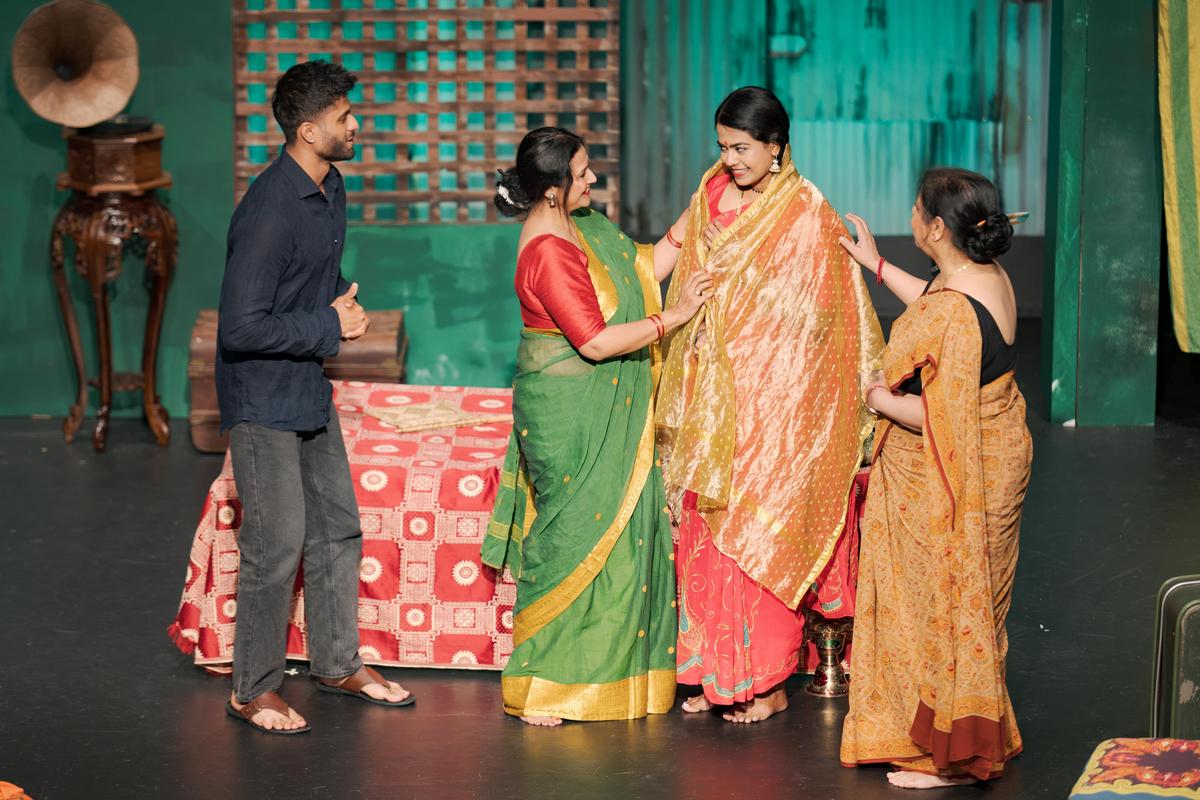Powerful and engrossing, Crimson Gully is a brilliantly written play by Sreekanth Gopalakrishnan.
Set in the 1990s, the story centres on a brothel within the fictitious town of Chandapur in India.
Crimson Gully, which translates to Red Light Street, shines a light on the prostitution industry, forcing the audience to look beyond the societal labels associated with the women in the brothel and see them as individuals with complex lives, aspirations and personal battles.
The play opens with the young and popular worker, Muskaan, performing a traditional South Asian dance known as Mujra to the clients.
Having born and grown up in the brothel, Muskaan accepted her fate and circumstances long ago but she does not see herself as a victim but rather a person who unlike the other girls, has chosen to remain in the brothel. However, deep inside she longs for another life but does not believe she is worthy of it.


Then there is Champa, who did all the things that society expected of her as a woman. She met a man, got married and had a child but lost it all when her husband died and she was left cleaning up the destruction and financial mess he left behind. Without any education or qualifications, she finds herself in the brothel, the only way she knows how to make a living.
The young and innocent Mansi, from a seemingly good family, shows the viewers how girls like her end up in the brothel through no choice of her own. Much like Champa’s situation, it also proves that marriage is not always the answer to a attaining a better life.
Jamuna, the eldest, having spent most of her life in the brothel, now just serves as the caretaker and cook.
Taai is the madam of the brothel. Initially, viewers may think of her as a villain but as the story evolves it’s clear that she is as much of a victim as the rest of the women, trapped in her circumstances and in many ways acts as their protector.
It is the few people at the top driven by greed and power, in this instance all men, that keep the women trapped in their unfortunate circumstances and other men in line. The simmering tensions build up to a dramatic climax that does not disappoint.


Gopalakrishnan, who also designed and directed Crimson Gully, does not shy away from bringing to the forefront weighty topics such as political corruption, human trafficking, misogyny, and poverty and how they are all interconnected.
Inspired by the DW documentary India’s Prostitution Village, Gopalakrishnan provides a realistic account of the industry. It is a story which could take place in any culture and in any country but the elements of greed and corruption remain the same. Crimson Gully provides an insight into how corruption from the top can trickle down and poison society as a whole.
The Great Indian Theatre Company brings the story to life, with all cast members delivering solid and powerful performances. Crimson Gully is not to be missed.
Photographer: Albert Antony Roy

